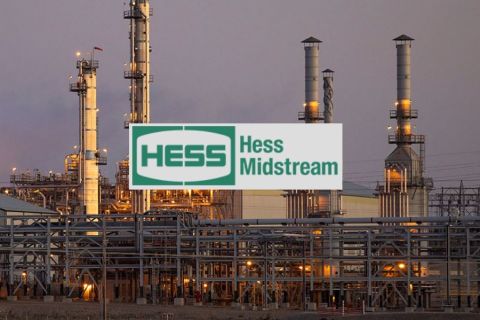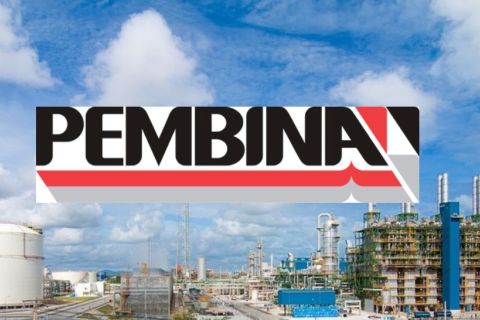The seismic method is in the tool of choice for providing detailed images of subsurface structure and stratigraphy. However, in many situations, seismic data can struggle to discriminate fluids. Given high-quality seismic and well data and sophisticated seismic inversion and rock physics tools, it is sometimes possible to relate these seismic changes to saturation effects. In other situations, for example in chalk or carbonate reservoirs, seismic data can constrain the porosity of the subsurface, but determining the fluid content remains challenging.
In contrast, in many situations electrical resistivity is driven by the properties and distribution of fluids in the earth. Commercial hydrocarbon deposits can be many times more resistive than surrounding lithologies. This change in resistivity caused by variations in fluid content and saturation can, in principle, be detected using controlled-source electromagnetic (CSEM) tools. However, when only CSEM data are considered, the results can be ambiguous because the effect of an increase in pore fluid resistivity cannot be distinguished from the effect of a decrease in porosity.
A WISE approach in the North Sea
The well integration with seismic (WISE) approach to data integration combines the strengths of both geophysical methods to compensate for the weaknesses in each. This approach has been applied to CSEM and seismic data acquired over a chalk reservoir in the North Sea. CSEM data are first inverted to provide a measure of the resistivity within the chalk layer. From this, the transverse resistance (vertically integrated resistivity), which is well constrained by the CSEM method, can be calculated.

A better picture of the subsurface emerges when the integrated WISE interpretation workflow is applied. (Images courtesy of RSI)
The seismic data also are inverted and calibrated using rock physics models derived from well log data to give the porosity of the chalk layer. Using an appropriate rock physics relationship among resistivity, saturation, and porosity, these data can be transformed to an equivalent seismically derived resistivity section.
Since the seismically derived transverse resistance takes into account variations in chalk thickness and porosity and assumes 100% water saturation, any deviation from this curve indicates a change in the resistivity of the pore fluids. Therefore, by comparing the CSEM derived transverse resistance with the seismically derived value, it is possible to isolate areas containing resistive pore fluid, indicating hydrocarbon charge.
In the CSEM survey, one of the lines passes from an area characterized by low to intermediate porosity chalk to an area of higher porosity at its northern end. In the North Sea case, fundamental frequencies of 0.05 Hz and 0.2 Hz were used. In each instance, the odd harmonics of the fundamental also were available for processing.
The CSEM amplitude and phase data were inverted to provide a 2-D resistivity section along the line. CSEM data by themselves provide an inherently low-resolution image of the structure of the subsurface. Structural constraints derived from seismic, in this case the top and base chalk boundaries, are therefore included in the CSEM inversion to improve the resolution of the result.
In the transverse resistance between the top and base chalk calculated from the inverted resistivity section, the CSEM results show clearly that the resistivity within the chalk increases toward the northern end of the line. The cause of the increase in resistivity, however, remains ambiguous when only the CSEM data are considered because porosity and fluid effects cannot be distinguished. This ambiguity can be resolved by incorporating the seismic data in the analysis.
Prestack seismic data have been inverted to predict the porosity of the chalk layer. Archie’s law, calibrated using well log data from the survey area, is applied to convert this porosity to an equivalent resistivity, assuming 100% water saturation, and from this an equivalent seismically derived transverse resistance can be calculated. The formation water resistivity varies by a factor of two over the survey area in response to diapiric salt intrusions. As a result, a low baseline and high baseline value of seismically derived resistance was calculated, bounding the range of values likely to be observed across the survey area.
The seismically derived transverse resistance for the 100% water-saturated case represents the effect of variations in porosity and chalk thickness. Any deviation from this curve is indicative of a change in pore fluid properties or type. The resistivity log from a horizontal well that penetrates a hydrocarbon accumulation in the central portion of the line is used to generate the expected transverse resistance curve for the known reservoir to illustrate this effect.

The upper panel shows the porosity in the chalk derived from seismic data. The equivalent transverse resistance, assuming 100% water saturation, is shown in the lower panel (light and dark blue curves) and for the known hydrocarbon saturation (pink and red curves). The calculated transverse resistance can be compared to the CSEM results (black); any deviation between the two suggests changes in the properties of the pore fluids.
WISE integrated interpretation
The effects of fluids in the chalk can be isolated by comparing the CSEM derived transverse resistance with the seismically derived values. At the southern end of the line and outside the area known to be charged with hydrocarbons, the CSEM result follows closely the low baseline seismically derived curve. This area also corresponds to the portion of the line closest to the salt diapir in the survey area, so low resistivity interstitial fluids would be expected if their salinity is higher than elsewhere.
In the area of the known hydrocarbon-charged reservoir, the CSEM result closely follows the high baseline seismically derived curve. Outside this area (from 19 to 25 km or 12 to 15 miles along the line), the large difference between the CSEM and seismically derived transverse resistance suggests an extension to the north of the hydrocarbon accumulation either beneath or adjacent to the line.
There often are ambiguities in the interpretation of a single geophysical data type. By using a WISE approach to the data integration, the ambiguities in each can be mitigated. In this example, seismic data can be used to identify porous areas in the chalk, and CSEM data can be used to identify areas of high resistivity. By integrating the analysis of the two data types, the ambiguities in each can be mitigated, providing an effective indication of the fluid content of the chalk.

The colors on this map of the layout of the CSEM survey represent the average porosity in the upper 24 m (80 ft) of the chalk layer, derived from the calibrated inversion of seismic data. The pattern fill in the lower left demarcates the outline of a salt diapir. The black circles represent receiver locations.
Acknowledgements
The authors would like to thank Maersk Oil, Chevron, and Shell for permission to publish this case study.
Recommended Reading
Venture Global Acquires Nine LNG-powered Vessels
2024-03-18 - Venture Global plans to deliver the vessels, which are currently under construction in South Korea, starting later this year.
Imperial Oil Shuts Down Fuel Pipeline in Central Canada
2024-03-18 - Supplies on the Winnipeg regional line will be rerouted for three months.
Hess Midstream Subsidiary to Buy Back $100MM of Class B Units
2024-03-13 - Hess Midstream subsidiary Hess Midstream Operations will repurchase approximately 2 million Class B units equal to 1.2% of the company.
Pembina Pipeline Enters Ethane-Supply Agreement, Slow Walks LNG Project
2024-02-26 - Canadian midstream company Pembina Pipeline also said it would hold off on new LNG terminal decision in a fourth quarter earnings call.
TC Energy's Keystone Oil Pipeline Offline Due to Operational Issues, Sources Say
2024-03-07 - TC Energy's Keystone oil pipeline is offline due to operational issues, cutting off a major conduit of Canadian oil to the U.S.




